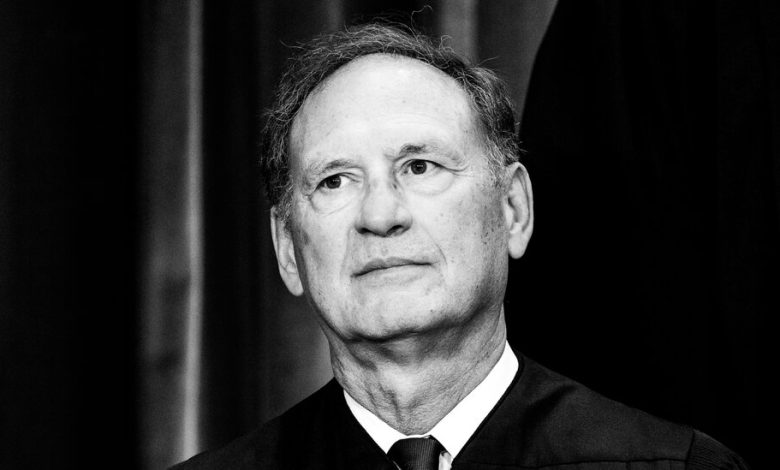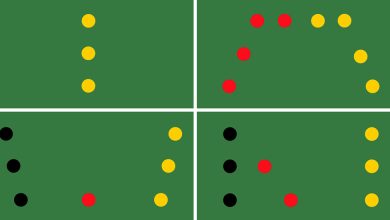Samuel Alito Has a Favorite Branch of Government

In theory, there is no branch in the American constitutional system that exists above or beyond the reach of the others.
“The great security against a gradual concentration of the several powers in the same department consists in giving to those who administer each department the necessary constitutional means and personal motives to resist encroachments of the others,” James Madison observed in Federalist No. 51.
Last week, Justice Samuel Alito gave a slightly different account of the relationship between the “departments” of government, at least as it relates to the relative power of the Supreme Court.
“Congress did not create the Supreme Court,” Alito said in an interview with writers from The Wall Street Journal’s editorial page. “I know this is a controversial view, but I’m willing to say it,” Alito continued. “No provision in the Constitution gives them the authority to regulate the Supreme Court — period.”
Alito was responding to a question about the prospect of ethics rules for the court. And he’s probably right that Congress has no authority to micromanage the conduct of individual justices. The legislature can’t force the justices to use one interpretive method over another or promulgate rules on how they reason through particular cases and decide them.
But Alito’s claim is much bigger than a narrow point about the overall independence of the court; it is a categorical statement of judicial supremacy that also stands as a glimpse into the arrogance of one justice on a court that falsely sees itself as the only and final authority on what the Constitution means.
It makes sense that Alito, who has used his platform to attack critics, journalists and anyone else who thinks the court has obligations to people outside the conservative legal movement, would see the court as standing outside the power of Congress to shape and check the federal government. But he’s wrong.
Set aside both the legislature’s power to impeach judges and its power of the purse over the judiciary — there’s nothing in the rules that says the court must have clerks, assistants or even a place from which to work — there are at least two provisions of the Constitution that authorize Congress to, in Alito’s words, “regulate the Supreme Court.”
Article I, Section 8, of the Constitution gives Congress the power “to make all Laws which shall be necessary and proper for carrying into Execution the foregoing Powers, and all other Powers vested by this Constitution in the Government of the United States, or in any Department or Officer thereof.”
The necessary and proper clause gives Congress broad authority to decide on what it needs to carry out its enumerated powers. “Congress has duties to perform and powers to execute,” Chief Justice John Marshall wrote in his opinion for the court in McCulloch v. Maryland in 1819. “It has a right to the means by which these duties can be properly and most usefully performed, and these powers executed.” By that standard alone, Congress almost certainly has the authority to regulate the court by way of its power to structure the federal judiciary.
If that isn’t enough, there is also Article III, Section 2, which outlines the jurisdiction of the court and gives Congress a direct and explicit role in shaping its procedures and conduct: “In all cases affecting Ambassadors, other public Ministers and Consuls, and those in which a State shall be Party, the Supreme Court shall have original Jurisdiction. In all the other Cases before mentioned, the Supreme Court shall have appellate Jurisdiction, both as to Law and Fact, with such Exceptions, and under such Regulations as the Congress shall make.”
It might be tempting to read this as a limited grant of power except for the fact that the vast majority of the Supreme Court’s work is in its appellate jurisdiction. As far as the Constitution is concerned, Congress cannot only shape that jurisdiction (“with such Exceptions”) but also set the terms by which the court exercises its appellate authority (“under such Regulations”). Congress could, to use one example, require justices to recuse themselves in any appellate proceeding in which they have a conflict of interest.
In addition to what is specified by the Constitution — Congress cannot restrict the “original jurisdiction” of the Supreme Court and it cannot diminish the salaries of the justices while they still hold office — there are obviously things the legislature cannot do to the court. No power, after all, is truly unlimited.
As it stands, however, the kinds of ethics rules that are on the table — or should be — fall squarely within congressional authority to shape, regulate and even discipline the Supreme Court. The ethics bill sponsored by Senator Sheldon Whitehouse of Rhode Island would impose new rules for financial disclosures and require justices to adopt a binding ethics code. And while there is the real issue of how to enforce an ethics code short of impeachment, which is essentially a dead letter as it relates to members of the Supreme Court, there’s no question that Congress has the power to pass a law of this kind.
Which brings us back to Justice Alito. Yes, the Supreme Court is a creature of the Constitution, not Congress. But the same constitution that creates the court also gives the legislature the power to check its influence and balance its power.
And if you are, like Samuel Alito, one of the most right-wing members of a right-wing court that is using its power to extend its influence over the political system — if you have been a pivotal figure in the effort to constitutionalize the views of your reactionary backers and allies — then you might be quite interested in trying to sell the idea that the Constitution doesn’t actually say what it was plainly written to say.
The Times is committed to publishing a diversity of letters to the editor. We’d like to hear what you think about this or any of our articles. Here are some tips. And here’s our email: [email protected].
Follow The New York Times Opinion section on Facebook, Twitter (@NYTopinion) and Instagram.





